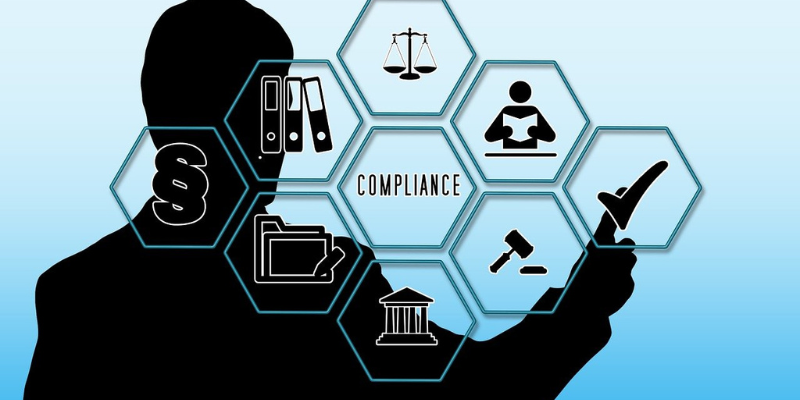Today, financial institutions face increasing pressure to comply with complex regulations while keeping up with technological advancements. Regulatory compliance is a crucial part of banking, insurance, and investment sectors, ensuring financial stability and protecting customers from fraud and unethical practices. However, with ever-changing laws, manual compliance management is becoming outdated and inefficient.
This is where technology steps in. Tech-driven compliance management solutions are revolutionizing the way financial institutions operate, making processes faster, more accurate, and cost-effective. In this article, we will explore how technology is transforming compliance management and helping financial institutions stay ahead of the curve.
Understanding Compliance Management
Compliance management involves ensuring that an organization follows regulatory requirements, industry standards, and internal policies. In the financial sector, this means adhering to rules set by regulatory bodies such as the Financial Conduct Authority (FCA), the U.S. Securities and Exchange Commission (SEC), and the European Banking Authority (EBA).
Non-compliance can lead to severe penalties, reputational damage, and even legal consequences. Traditionally, compliance involved manual audits, paper-based documentation, and labor-intensive monitoring. But as regulations become more complex, relying solely on human efforts is no longer practical.
How Technology is Transforming Compliance Management
Automation and Artificial Intelligence (AI)
AI-powered compliance tools automate routine tasks like monitoring transactions, identifying suspicious activities, and generating compliance reports. Machine learning algorithms can detect patterns of fraud and flag potential violations before they escalate.
For example, AI-driven tools analyze vast amounts of financial data in real time, helping institutions comply with Anti-Money Laundering (AML) and Know Your Customer (KYC) regulations. These tools reduce human errors, minimize costs, and enhance efficiency.
Cloud-Based Compliance Solutions
Cloud computing allows financial institutions to store and manage compliance data securely. Cloud-based solutions provide real-time access to regulatory updates, helping organizations stay compliant without manual intervention.
Additionally, cloud technology enables seamless collaboration across departments, making compliance reporting more efficient. Institutions can easily access audit trails, compliance documentation, and risk assessments from anywhere, ensuring better oversight.
Blockchain for Transparency and Security
Blockchain technology offers a tamper-proof system for storing financial transactions and compliance records. Since blockchain data is decentralized and immutable, it enhances transparency and security in regulatory processes.
For instance, blockchain can streamline KYC procedures by providing a digital identity verification system, reducing duplication of efforts between financial institutions. This speeds up customer onboarding and reduces compliance risks.
Robotic Process Automation (RPA)
RPA uses bots to handle repetitive compliance tasks such as data entry, report generation, and document verification. This reduces human workload, allowing compliance officers to focus on high-risk areas.
For example, RPA can help banks process large volumes of transactions and flag inconsistencies automatically. This not only ensures compliance but also improves operational efficiency.
RegTech: The Rise of Regulatory Technology
RegTech (Regulatory Technology) is a specialized area of fintech that focuses on automating compliance processes. RegTech solutions use AI, big data analytics, and cloud computing to help financial institutions comply with regulations efficiently.
These tools monitor transactions, assess risks, and provide instant alerts when compliance issues arise. Companies using RegTech solutions can adapt to regulatory changes faster and reduce compliance costs.
Benefits of Tech-Driven Compliance Management
- Accuracy and Efficiency: Automated compliance tools minimize human errors, making regulatory processes more accurate and efficient.
- Cost Reduction: Technology reduces the need for large compliance teams, cutting operational costs for financial institutions.
- Enhanced Security: Blockchain and AI-powered tools strengthen data security and protect institutions from cyber threats.
- Real-Time Monitoring: AI-driven systems detect risks in real-time, preventing financial crimes and regulatory breaches.
- Scalability: Cloud-based solutions allow financial institutions to scale compliance efforts as regulations evolve.
Challenges and the Road Ahead
Despite its benefits, implementing tech-driven compliance solutions comes with challenges. Financial institutions must invest in the right technology, train employees to use new tools, and ensure data privacy. Additionally, regulators need to keep pace with technological advancements to create balanced policies.
Looking ahead, the integration of AI, blockchain, and advanced analytics will continue to shape compliance management. Financial institutions that embrace technology-driven compliance solutions will stay ahead in an increasingly regulated world.
Conclusion
Compliance management is no longer just about following rules—it’s about using technology to create a smarter, more secure financial system. From AI-powered monitoring to blockchain transparency, tech is transforming how institutions handle compliance, ensuring financial stability and customer trust.
For financial institutions, investing in modern compliance solutions is not just an option; it’s a necessity for long-term success. By leveraging the power of technology, organizations can stay compliant, mitigate risks, and drive innovation in the financial sector.



































